Chichen Itza, the jewel of the Mayan world is an incredibly easy place to travel with children, but it may not take you back in time.
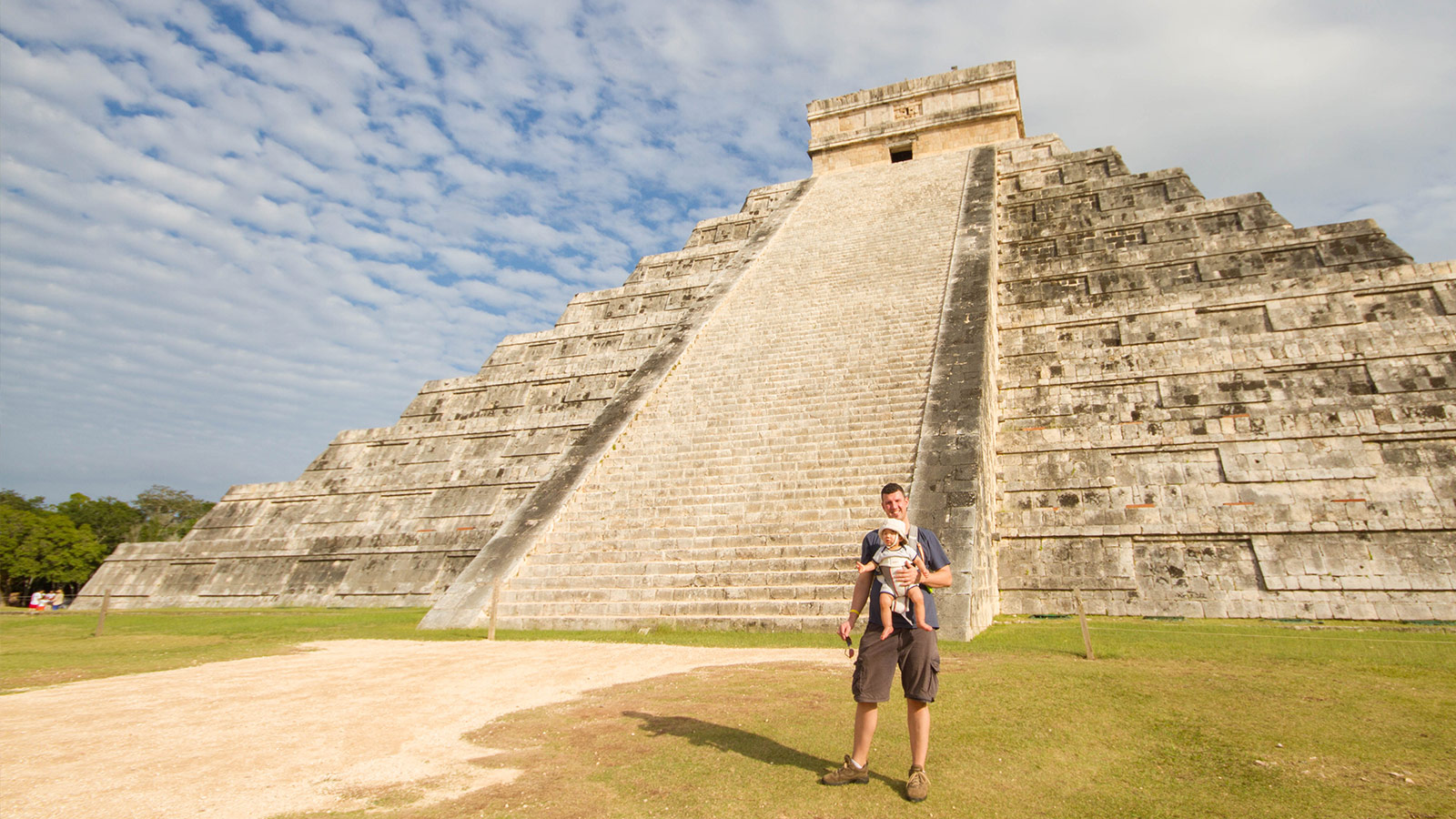
Deep within the countryside of Mexico’s Yucatan peninsula lies the incredibly preserved Mayan city of Chichen Itza. The Mayans mapped the heavens, developed writing systems, and pioneered the calendar system that we use today, all without the benefit of metal tools, or even the wheel.
We plopped our little six-month-old kiddo into the car seat of our rental and drove the 180 km journey from Cancun, choosing to avoid the much faster toll highway (cuota) in exchange for a chance to tour through the quaint Mexican villages that dot the countryside on the free route (libre) that runs south towards Tulum. The drive through the villages is wonderful. The road is easy to navigate, but be prepared to experience the plethora of speedbumps, dodge cyclists, mules and children playing ball, all while witnessing the quiet and quaint rural Mexican life.
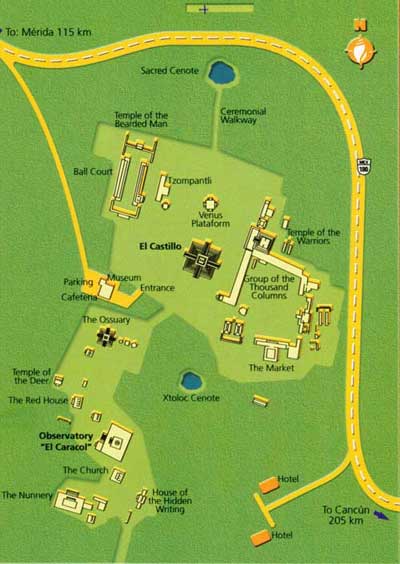
Arriving in Chichen Itza
Table of Contents
As soon as we arrived at Chichen Itza we found that the tree-lined pathway that leads you to the main level is simply over-run by merchants. It seemed that every bit of free space was filled with tables selling the exact same wares as the one next to it. We were pulled aside every few seconds as we made our way into the site by guides whispering that they can negotiate excellent prices for their services. We opted to guide ourselves while we were here, and slalomed our way through the crowd of guides towards the entrance to Chichén Itzá.
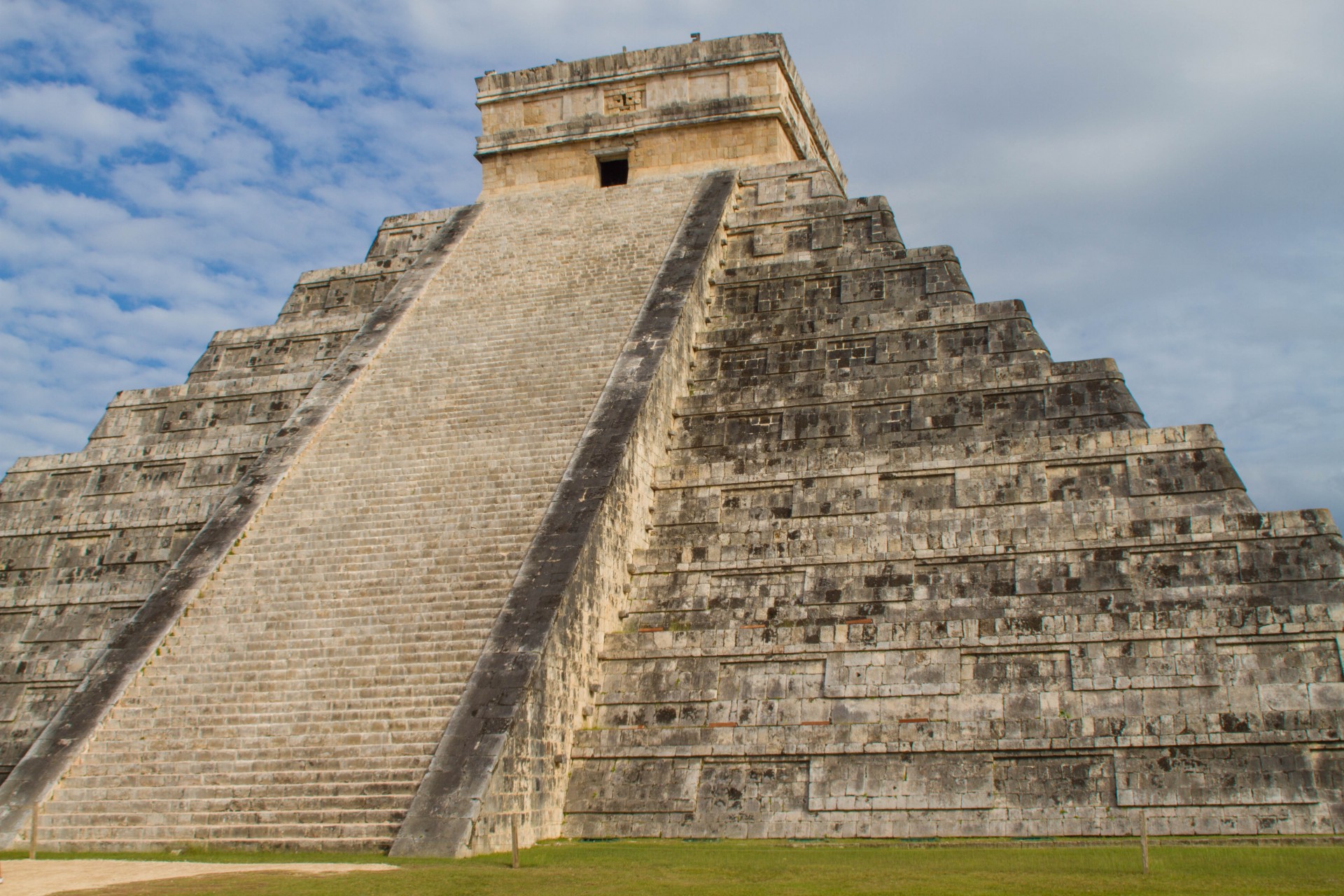
If you opt for the tour yourselves, know that many of the guides here are incredibly educated about the ruins and Mayan history. You probably won’t be disappointed by the experience. With our infant in tow, we opted to discover the sites by ourselves at a nice slow pace. Chichén Itzá itself is very accessible. You can easily navigate a stroller with larger wheels through the wide flat squares, although using a kid-carrier will help if you decide to climb any of the stairs or accessible ruins. It’s also important to pack a lot of water and sunscreen to keep you and the children hydrated while under the hot Mexican sun. There are groves of trees dotted throughout the site, but they are few and far between and if you are there at a busy time, finding space can be difficult.
El Castillo
After walking along the pathway that leads into the site, the trees opened up from around us and we were presented with the spectacular Pyramid of Kukulcan (El Castillo), the most famous landmark of Chichén Itzá, and perhaps the whole Mayan culture. Chichén Itzá was a key point on the Central American trade route for over 1000 years and reached its height between the 11th and 13th century A.D. before being mostly abandoned around the 14th century. El Castillo has a massive presence and we were humbled standing in front of it. The site became a Unesco World Heritage site in 1988 and since then, climbing access to the pyramid has been removed, however, it is still incredible to wander around the monument and bask in the fact that it was built without iron tools, the wheel, or beasts of burden. The monument is built to be aligned with the skies and each side contains 365 steps, one for each day of the Mayan calendar year.

Why I might pass on Chichen Itza in the future
After having spent time in the ruins of Tikal in Guatemala and Lamanai in Belize, both of which offered intimate atmospheres that hinted at mystery, adventure, and discovery, I was struck by the coldness of Chichen Itza. I can’t point to an exact thing that caused this feeling, however, I believe that it was a cross between the commercialism of the vendors, the lack of nature within the actual ruin and an almost sterile atmosphere. Where Tikal and Lamanai existed amongst the jungle growth, and you could literally stumble upon ruins that were partially exhumed, in Chichen Itza I felt that I was almost walking through a movie set. The ruins were in spectacular shape, the walls starkly clean and everything seemed professionally framed against the manicured green grass.
Ball Court and Beyond
Off to the left side of the Pyramid, we wandered over to the ball court. The court at Chichén Itzá is the largest in the Mayan world and is a great place for kids to run and explore. The sharply angled walls make for fun photo opportunities, just don’t lose the game, as in the Mayan culture, it’s believed that those who lost the game were honorably sacrificed to the Gods.
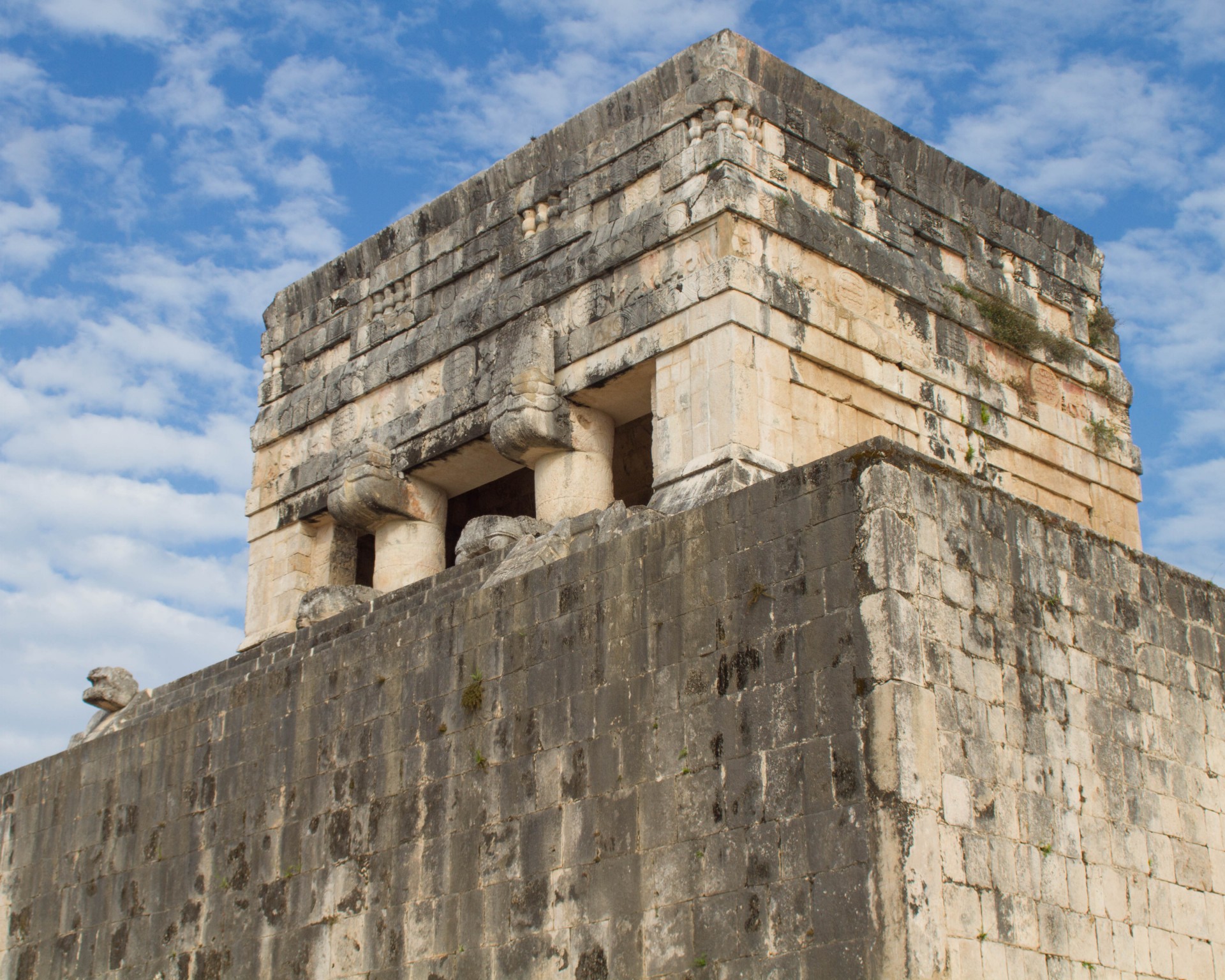
Walking east along the tree-line, we took a turn down the long, vendor saturated path towards the Sacred Cenote (Well of Sacrifice). The cenote is tough to see through the trees, but if you are willing to do some climbing, you can get to some nicer viewpoints. This is where the Mayans sacrificed objects, animals and even people, dumping the objects and bodies into the cenote, which they believed led to the Xibalbá (The Underworld). The cenote is now protected by a wire fence and while I don’t know if it’s forbidden, getting closer to the cenote beyond the trail is at the very least frowned upon.
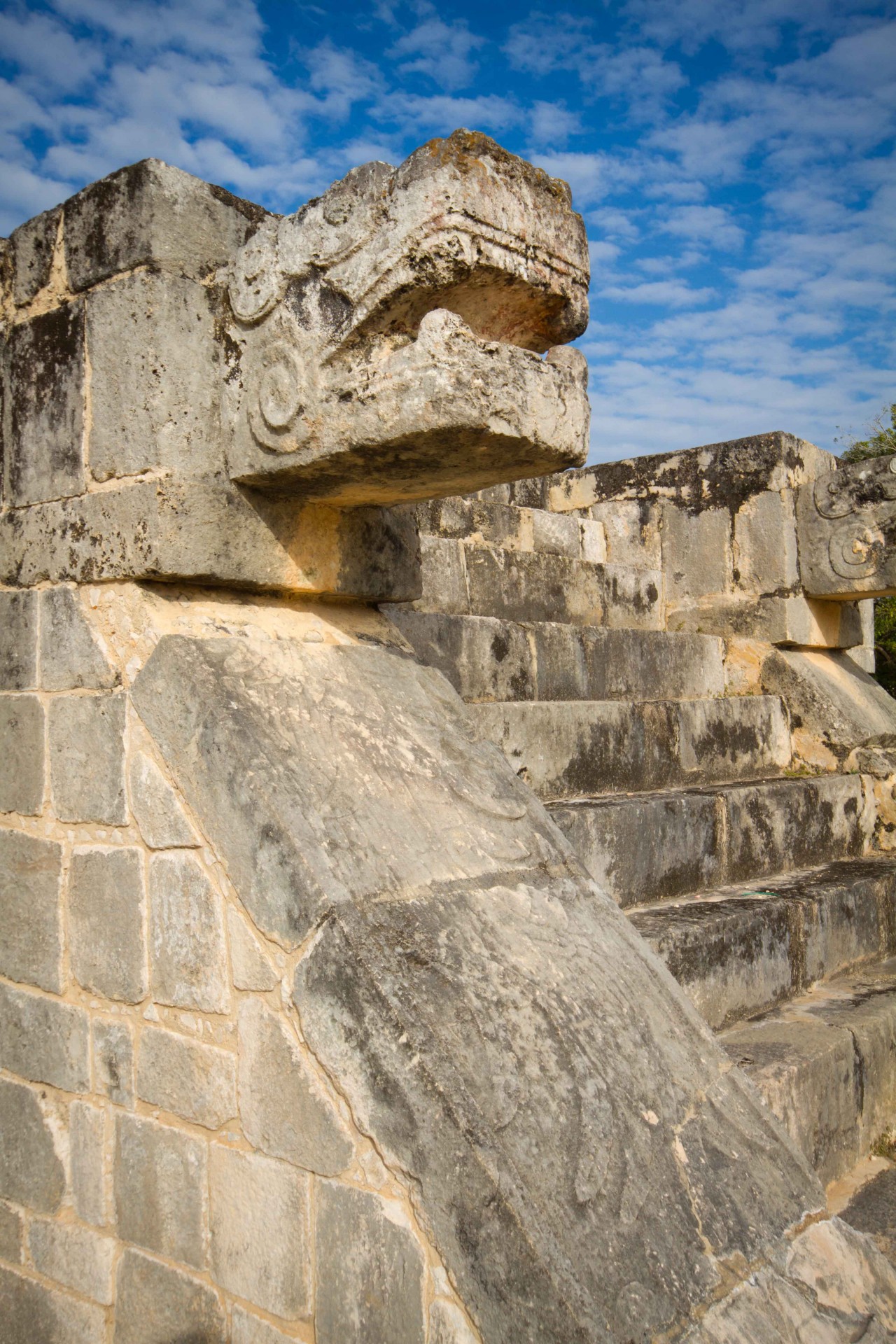
We fought our way back through the sea of vendors towards the level area, exploring the spectacular Group of the Thousand Columns, where C took some time to explore before we moved on towards the Ossuary and then the spectacular El Caracol (The Observatory).
At first glance, the Observatory looks a lot like modern-day telescope housings, when in fact, in its heyday, this structure was much boxier looking than it is now. There is evidence, however, that this building was used as a lookout to the heavens. The building is aligned with the motion of Venus, which had significant importance to the Mayans. The Observatory, in my opinion, while not holding the massive and awe-inspiring presence of the Pyramid of Kukulcan feels like the most “real” building within Chichen Itza. Its presence offers a glimpse back into the science and incredible knowledge of the Mayans and gives a taste of the value that they put into mapping the stars.
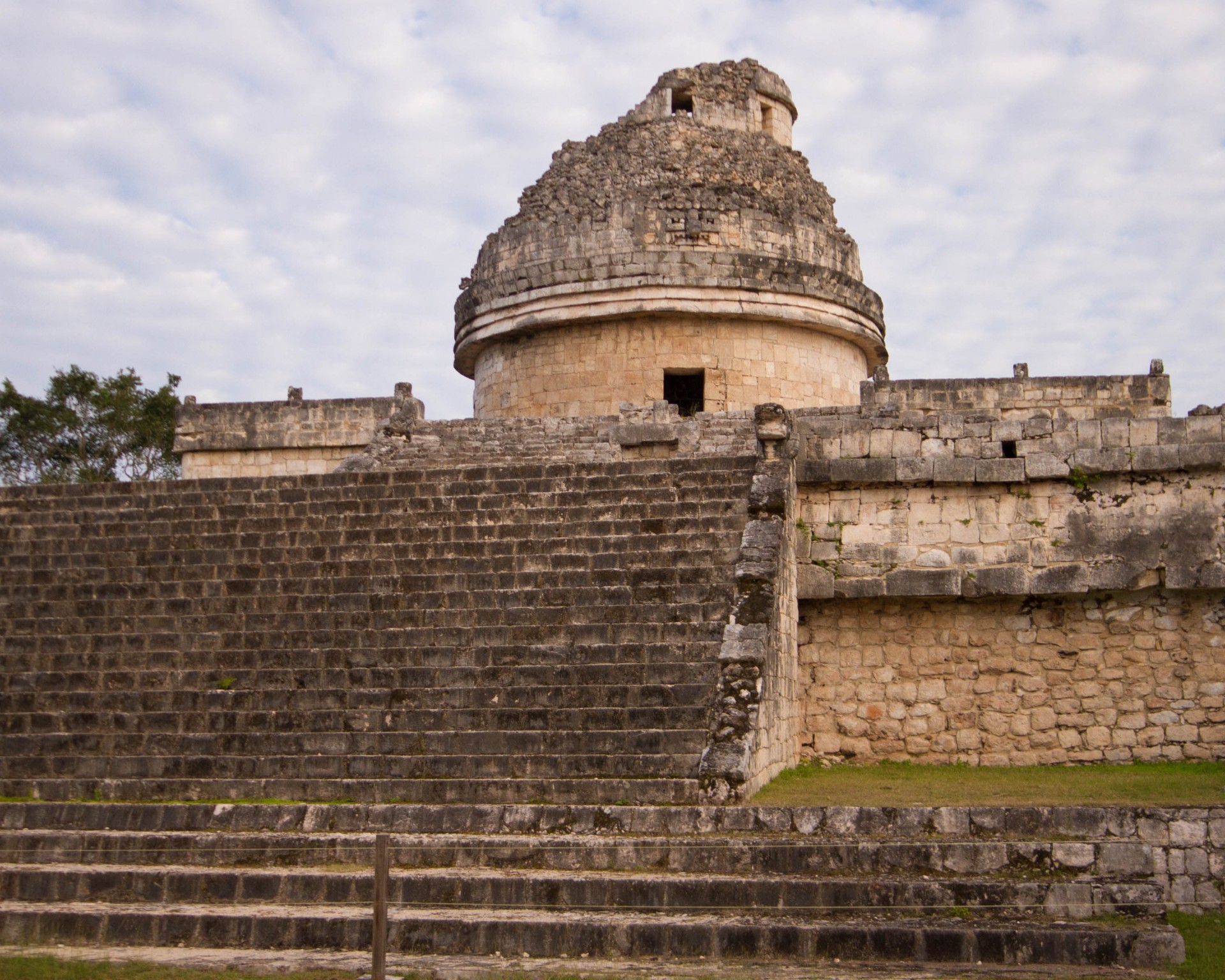
Chichen Itza is an incredible site. The history and quality of the ruins are beyond any of those that I had seen thus far. It was, in retrospect, the perfect time to visit it, as C was an infant and was too young to get bored. For older children however, Chichen Itza would be a tough sell. Visiting this site is like visiting a museum. You can look, but you can’t touch. Chichén Itzá is wonderful for its history and quality, but if you are looking to tap your inner Indiana Jones, there are better options, such as Coba, for you to explore.
With night fast approaching, and little desire to risk travelling the Mexican highways in the dark, we decided that it was time to start the long trip back to Cancun where dreams of Mayan life and rituals would fill our dreams for many nights.
This post may contain compensated links. For more information please read our disclaimer. Wandering Wagars is a participant in the Amazon Services LLC Associates Program, an affiliate advertising program designed to provide a means for sites to earn advertising fees by advertising and linking to amazon.com, amazon.co.uk, amazon.ca. Amazon and the Amazon logo are trademarks of Amazon.com, Inc. or its affiliates.
You May Also Like To Read:
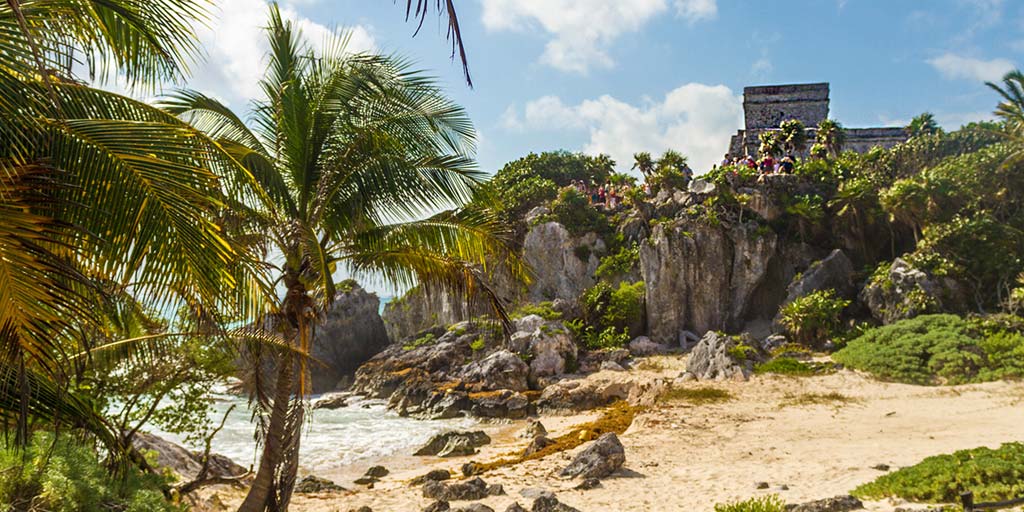
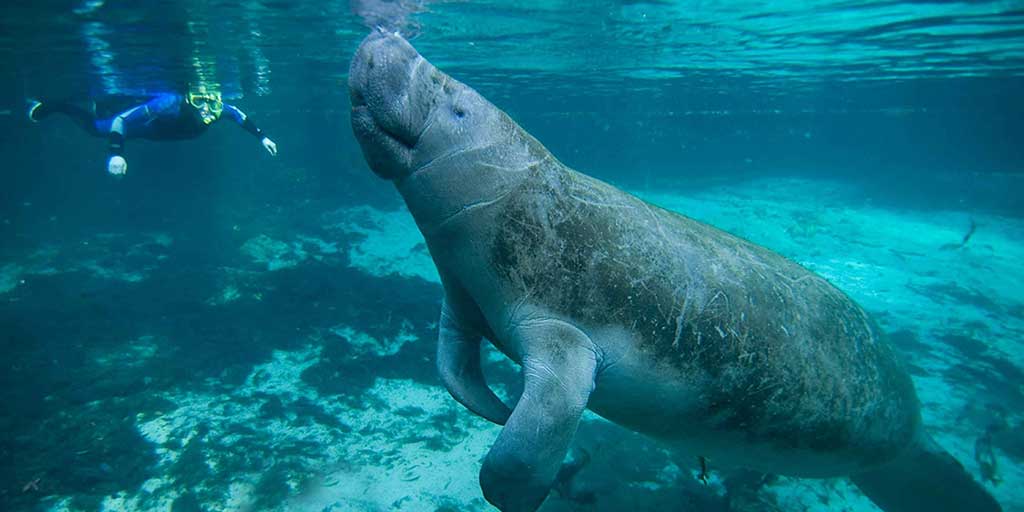
Pin This Post For Later:
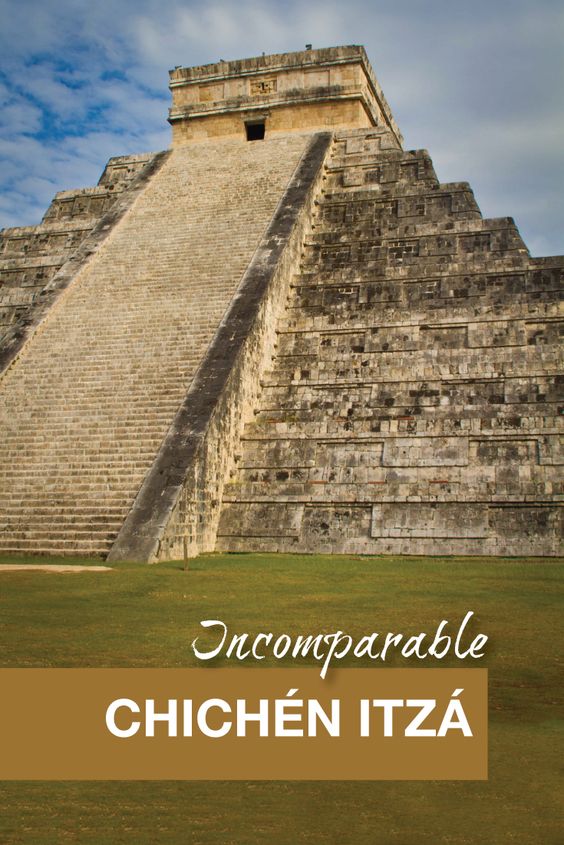

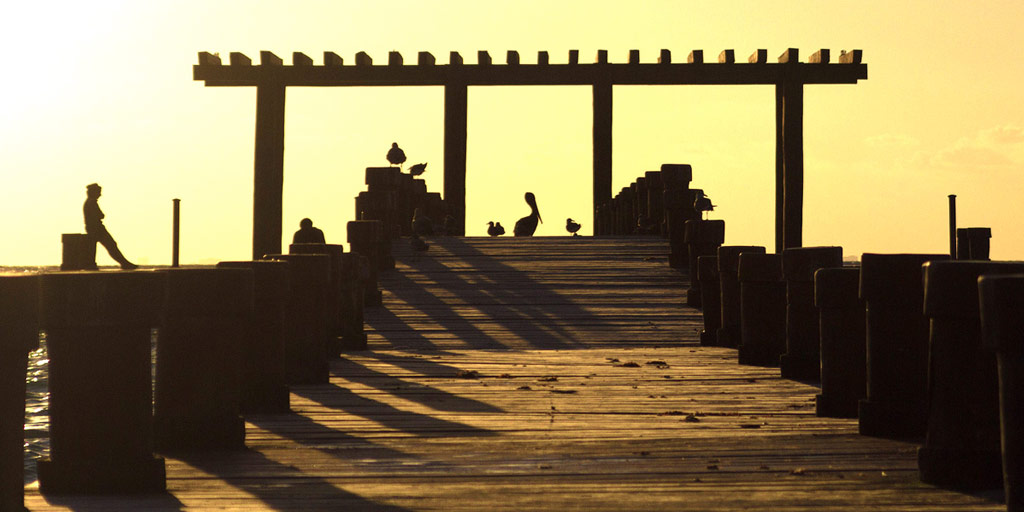
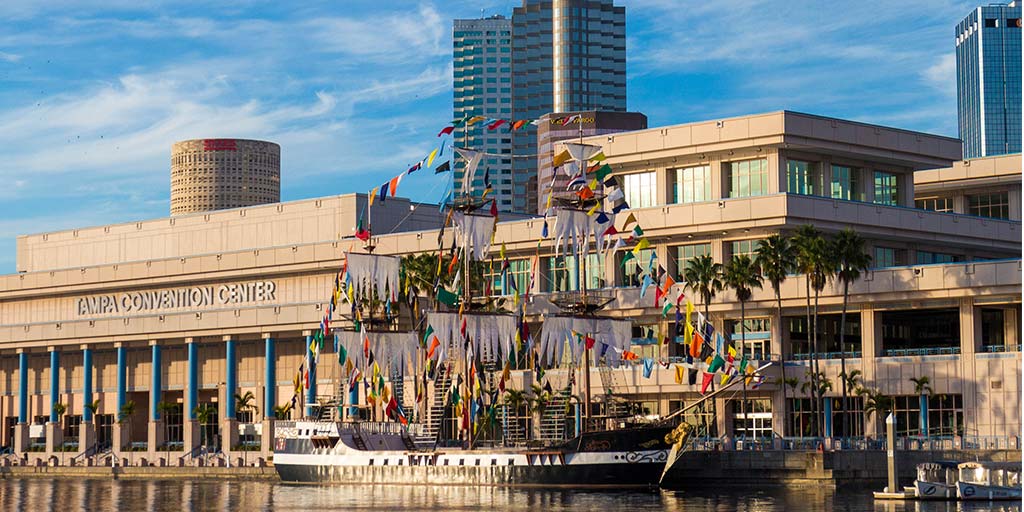
David Bugatto
Thursday 15th of February 2018
Your website is very visitor friendly, I love the format.
Our family of five stayed in Mexico for a month last year and our two favourite experiences were visiting the various ruins and exploring the Cenotes that could be found all over the Yucatan Peninsula. Despite wanting to visit Chichen Itza, the locals and other fellow backpackers discouraged us from going, stating some of the criticisms you mentioned in your article. We were told it was over commercialized, over crowded and lacked a sense of connection with the natural surroundings. Sounds pretty bang on! We visited Tulum which was ok, but the best spot we enjoyed were the Uxmal ruins. There were very few people, the jungle was right there on the outskirts of the ruins and you could climb and explore pretty much all of the structures there. We were happy with our decision, we made some great memories together and the kids loved it!
Vyjay
Friday 4th of November 2016
The Mayan age and civilization is always a source of great fascination for me. I really wonder at the ingenuity of the people in that great past who could build such phenomenal structures of stone.
Francesca | The Working Mom's Travels
Tuesday 26th of April 2016
I've never been to Chichen Itza but know the importance of packing sunscreen and water when visiting a site like this. I'm fascinated by ruins so I think I'd like to visit, but I'll keep in mind what you said about it being cold and almost artificial.
carrie @ frugal foodie mama
Sunday 10th of April 2016
I think it is so cool to be able to stand on and touch something that was built 1000's of years ago. I felt that way when my husband and I walked through Castillo San Felipe del Morro in San Juan. To just think of the stories that those walls could tell... It's pretty surreal, actually.
Salwa Kisswani
Saturday 9th of April 2016
Wow that's such a great trip. I can't believe I missed those areas in my last Mexico trip.. I gotta go back again lol Thanks fo sharing